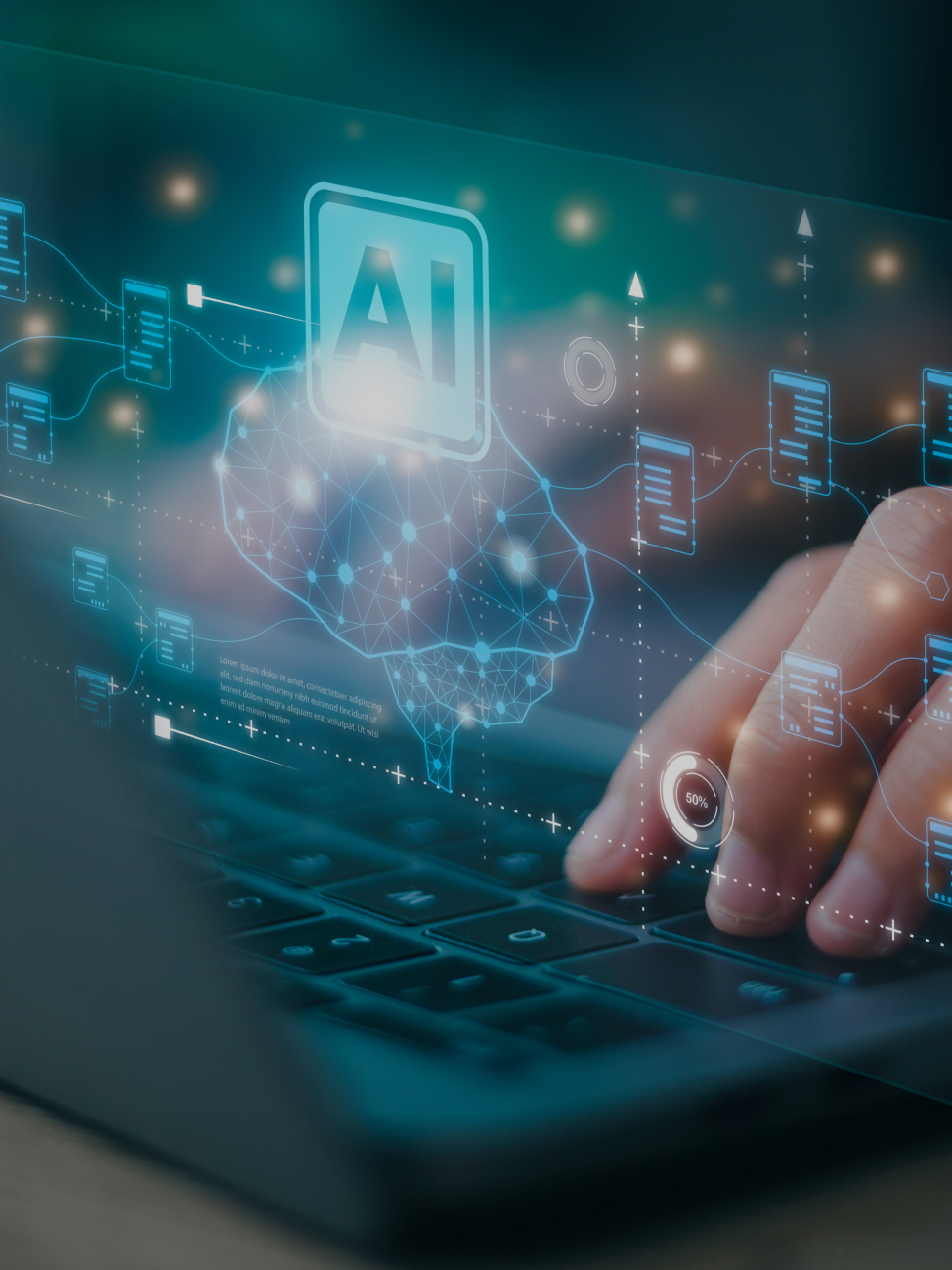Empower decision-making with AI-infused knowledge management

We leverage the power of generative AI to streamline data processes and unlock deep insights, for informed decision-making and continuous innovation.
Elevate data intelligence with advanced AI integration
Discover how precision meets efficiency, transforming raw data into a powerhouse of insights and opportunities. Embrace a future where every interaction decision is enhanced by the unmatched potential of AI.

Data ingestion pipeline
This entails building data pipelines, including data engineering, to create a knowledge base that can support LLMs context generation and contextual information search. The pipeline will be also responsible for data validation and data cleansing, which ensures data integrity and accuracy of the AI-driven decisions.

Information vectorization
It’s about developing methods to convert vast and diverse data into a format usable for AI processing. This includes transforming unstructured data from reports, customer feedback, and IoT devices into structured formats that can feed into AI models for better insights and decision-making.
Custom graph databases
We help you build specialized graph databases that can effectively store and manage complex relationships within industries, such as parts hierarchies, supplier networks, and customer interactions. These databases can enhance the performance of AI applications by providing them with rich, interconnected data sources.
Integration with LLMs
Integration of existing systems, processes and apps with generative AI can greatly improve business processes, reduce time required for repetitive jobs, or improve creative parts of the design process.

Associative Knowledge Graph of the American Car Market
Generative AI

Chat-GPT Augmented Intelligent Owner’s Guide
Generative AI

Optimizing Operations with Generative AI Chatbot
Generative AI

Chatbot Integration for Streamlined Internal Communication
Generative AI

Advanced AI Solution for Text Summarization and QA
Generative AI
See how you can use generative AI to improve data management and analysis processes
Transforming unstructured data into AI-ready formats
Using sophisticated algorithms, AI systems meticulously parse, categorize, and normalize diverse datasets, from financial transactions to IoT sensor streams, to customer feedback. This meticulous transformation of raw, often chaotic data into a structured format is tailor-made to complement AI analytical models. This process not only improves the accuracy and effectiveness of AI applications but also provides valuable insights hidden in unstructured datasets, driving informed decision-making and strategic initiatives.
Advanced knowledge representation – automotive industry example
Generative AI plays a crucial role in developing and enriching knowledge graphs. These AI-enhanced graphs not only depict complex relationships between data entities but also continuously evolve by integrating new information and learning from interactions. By leveraging AI, these graph databases become dynamic and context-aware, capable of adapting to changes and uncovering deep insights about operational efficiencies, market trends, and customer preferences, thus enabling the automotive industry to make strategic decisions based on a comprehensive understanding of its ecosystem.
Contextual analysis and predictive insights
Leveraging the power of Generative AI, knowledge hubs can perform deep contextual analysis and generate predictive insights from complex data networks. AI models can understand and interpret the intricate relationships within data, such as those present in graph databases, offering foresight into future trends, potential issues, or opportunities. This predictive capability allows organizations to not just react to the current landscape but to anticipate and strategically prepare for future developments.
Let’s talk about solutions that empower intelligent data management
Find out how to create a knowledge base with the use of AI
How does generative AI improve data ingestion and vectorization in knowledge management systems?

Generative AI enhances data ingestion by automating the extraction and categorization of data from various sources, ensuring a seamless and efficient flow into knowledge management systems. For data vectorization, AI models convert complex, unstructured data into a structured format, making it more accessible and usable for further processing.
In what ways do knowledge graphs benefit from the integration of generative AI?

Integrating generative AI with knowledge graphs enriches the representation of data. AI models can identify and establish complex relationships and patterns within the data that might not be immediately apparent. This leads to a more dynamic and contextually rich knowledge graph, enhancing the system’s ability to provide comprehensive, nuanced insights and improving the decision-making process in various business contexts.
How does generative AI contribute to data structuring, and what are the benefits of creating a knowledge base?

Generative AI significantly enhances data structuring by intelligently categorizing, organizing, and formatting raw data into a coherent structure. This structured data is then used to build a comprehensive knowledge base. The benefits are manifold: it allows for quicker data retrieval, more accurate analytics, and easier identification of trends and patterns. A well-structured knowledge base powered by generative AI becomes a critical resource for informed decision-making and strategic planning.